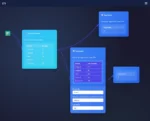
by tyler garrett | Jun 25, 2025 | Data Visual
Agriculture is undergoing a radical transformation driven by data analytics and innovative technology. As farms become increasingly digitized, the collection and visualization of agricultural data are transforming traditional practices into precision farming. By leveraging powerful analytics, farmers and agricultural businesses can optimize productivity, enhance resource management, and make proactive, data-informed decisions about their operations. At the intersection of data analytics and modern farming, visualization becomes the key tool for dissecting complex data, discovering insights, and improving overall outcomes. With the right approach to choosing the appropriate chart types and analytics methods, stakeholders receive actionable insights that drive sustainable agriculture. Join us as we delve into the strategic impact of data visualization in precision farming and explore how innovative agricultural analytics are reshaping the landscape of agriculture today.
Harnessing the Power of Precision Agriculture Analytics
Precision agriculture involves utilizing technology and data analytics to manage crop production more effectively, minimize waste, and maximize overall yield. At its core, precision farming analytics involves capturing vast amounts of data, from soil moisture and nutrient levels to weather patterns and machinery performance, and translating this data into detailed visualizations that farmers can understand intuitively. Advanced analytics techniques, such as regression analysis and machine learning, drive deeper insights from data collected in the field. Employing techniques like visual diagnostics for regression model evaluation allows farmers to pinpoint variables significantly impacting crop performance. As modern technology becomes increasingly decentralized, visual dashboards delivered via cloud-based solutions provide farmers real-time access, granting immediate oversight and dynamic responsiveness to changing conditions.
Software consulting and innovative solutions providers like ours recognize that strategic visualization of precision farming analytics must be both intuitive and insightful, enabling quick yet informed actions. With clearly consolidated insights gathered through detailed maps, dashboards, and real-time representations, farming enterprises transition seamlessly from reactive oversight to proactive management that anticipates challenges before they arise. In doing so, agricultural businesses accelerate their capacity for problem-solving and enhance overall productivity, thereby positioning themselves firmly ahead of conventional farming practices.
Customizing Visual Analytics for Actionable Insights
To realize the full potential of agricultural analytics, visualizations must be tailored to the specific needs and goals of farming stakeholders. For example, visual representations of soil health metrics, plant vigor, or real-time equipment sensor data require unique representations that effectively communicate complex multidimensional data sets. Customized visualization allows users to move beyond surface-level insights toward actionable decision insights that are contextually relevant. Here, practitioners and stakeholders are guided in properly choosing the right chart type for their agricultural data, ensuring clarity and accuracy in communicating insights. A carefully chosen visualization not only simplifies complex analyses but also significantly enhances decision-making processes on the farm.
From geo-spatial heatmaps that indicate nutrient depletion zones, to dashboards providing machinery downtime and operational optimization data, the effort in visualization significantly simplifies complex data streams. Furthermore, customizable user interfaces allow different stakeholders—from farm operators on the ground to strategic planners and even supply chain partners—to interact seamlessly with visualization tools. With thoughtful customization, we embrace complexity and distill it down to actionable insights, a specialty provided by analytical solutions targeted precisely to farming enterprises eager for strategic guidance.
Efficiency and Automation through Advanced Data Pipeline Techniques
Precision farming accumulates tremendous data volumes; processing, analyzing, and visualizing this data manually becomes nearly impossible and hugely inefficient. Consequently, the implementation of flexible, adaptable data pipelines is essential. Today, several advanced data management methodologies increase efficiency and ensure robust analytics. For instance, the adoption of self-healing data pipelines with circuit breaker patterns can prevent delays from system errors, ensuring continuous, efficient flow of critical farm data.
Additionally, modern data architectures often involve innovative approaches like recursive materialized view patterns, which provide efficient analytical hierarchies. Such methodologies can effectively tackle common agricultural data complexity, like multiple dependent variables or hierarchical farming datasets. Combining automation and sophisticated pipeline techniques, expertly managed through modern analytics infrastructure, precision agriculture analytics become dramatically more responsive—allowing for better agility and faster decision-making, thereby drastically reducing operational risks and enhancing productivity.
Empowering Farmers with Big Data and Innovative Technology
Modern analytics solutions rooted in big data platforms and advanced data transformation techniques are crucial in unlocking new opportunities for farmers. Technologies such as machine learning applications and artificial intelligence models create powerful synergies by turning vast datasets into real-time actionable insights. Utilizing high-performance code generation for data transformations significantly accelerates analytical processes, enabling farmers to extract transformative insights from large-scale agricultural data with unparalleled efficiency.
Precision agriculture’s effectiveness relies heavily on managing complex, large-volume datasets with ease, flexibility, and speed. By leveraging cutting-edge big data technologies, farmers efficiently scale up data processing capabilities to accommodate expanding plantations, navigate heavy seasonal needs, or manage data acquired from IoT-equipped machinery. This scalability dramatically improves decision-making timeliness and financial performance. Furthermore, as computational capabilities rapidly advance, opportunities in computing are evolving, including revolutionary innovations like quantum computing. Understanding and harnessing the potential of quantum computing power will redefine agricultural analytics, providing real-time predictive models and optimization strategies that were previously unimaginable.
Integrated AI Solutions for Smarter Precision Agriculture
Artificial intelligence integration not only enhances data processing capabilities but also effectively elevates precision agriculture’s automation potential. With hybrid AI systems that combine data analytics, expert reasoning, and real-time decision-making feedback loops, farms can drastically improve their operational strategies. Using strategic AI consulting services, such as our AI agent consulting services, farmers gain integrated solutions designed specifically to elevate decision support systems through intelligent, context-aware analytics.
AI integration provides unique capabilities ranging from predictive analytics for weather or disease threats to personalized farming recommendations, automated crop health monitoring, and highly adaptive resource management systems. AI-based agents assess historical and real-time data, interpret complex relationships within agricultural data sets, and transform this knowledge into actionable, visually intuitive insights for farmers. By effectively harnessing these intelligent systems driven by scalable computing, farmers can engage in proactive management rather than reactive troubleshooting, dramatically optimizing overall productivity and significantly reducing operational risks.
Future Outlook: Agriculture Analytics and Visualization Revolutionized
As agricultural digital transformation progresses, precision farming and data-driven analytics are set to radically redefine agricultural productivity and sustainability. The continuous evolution of advanced analytics, artificial intelligence, machine learning, and novel computational methods promises vast improvements in farming efficiency and effectiveness. New visualization techniques will unlock previously untapped insights, empowering farmers like never before and allowing farmers to deeply understand operational complexities.
Innovations such as artificial intelligence integration, big data automation, data pipeline optimization, and quantum-driven analytics revolutionize what farmers can achieve, creating thriving interconnected information systems able to adapt dynamically to real-world agricultural challenges. Agricultural visualization is not a siloed discipline—it’s part of a broader data analytics ecosystem constantly evolving toward excellence. The future of precision agriculture holds immense opportunities for stakeholders ready to leverage powerful analytics, innovative data visualization, and technology advancements. Agricultural stakeholders equipped with data expertise, strategic consulting, and cutting-edge visualization tools will define the future farming landscape.
Thank you for your support, follow DEV3LOPCOM, LLC on LinkedIn and YouTube.

by tyler garrett | May 30, 2025 | Data Management
In the rapidly evolving digital ecosystem, companies accumulate vast volumes of data that hold immense operational, strategic, and competitive value. However, protecting sensitive information while allowing appropriate access to stakeholders remains a constant technological challenge. Time-limited access control mechanisms emerge as an intelligent solution, offering granular, secure, and highly adaptive management of data assets. Today’s innovative business leaders recognize the necessity of balancing flexibility with precision—ensuring data accessibility aligns perfectly with evolving organizational objectives, laws, and user roles. In this blog, we will delve deeply into the strategic implementation of time-limited access control, highlighting its transformational potential to foster smoother operations, enhance regulatory compliance, and deliver powerful business analytics. By mastering these access control practices, companies position themselves strongly in data-driven markets and empower their employees through timely access to vital insights.
Why Time-Limited Access Control Matters
Organizations increasingly rely upon dynamically generated data streams to inform critical decisions and business processes. With this growing reliance comes the intricacy of balancing rapid and secure accessibility against potential risks arising from unauthorized or prolonged exposure of sensitive information. Time-limited access control systems uniquely serve this need by facilitating granular permission management, ensuring resources are available strictly within defined temporal scope. This solution mitigates risks such as unauthorized access, accidental information leaks, and regulatory non-compliance.
Consider collaborative research projects, where external stakeholders must securely access proprietary data sets within predefined timelines. Utilizing time-limited access control systems allows clear boundary management without the manual overhead of revoking permissions—one example of how data-centric organizations must evolve their pipeline infrastructure to embrace smarter automation. Not only does this practice protect intellectual property, but it also fosters trust with external collaborators and partners.
Further, time-bound permissions prevent prolonged exposure of sensitive data, an issue that is particularly crucial in dynamic industries like financial services or healthcare, where data exposure compliance regulations impose strict penalties. Aligning your employee access to job duties that frequently change reduces vulnerability while keeping your organization’s information posture agile. Time-limited access control thus becomes a core component of modern data strategy, facilitating a robust approach to securing assets and maintaining responsiveness to rapid operational shifts.
The Key Components of Time-Limited Access Control Implementation
Dynamic Identity Management Integration
To effectively implement time-limited access controls, an organization first requires advanced integration of dynamic identity management solutions. Identity management systems provide standardized access for user identities, ensuring that time-based restrictions and user permissions align fluidly with evolving personnel responsibilities or projects. Integrated identity management platforms, enhanced by artificial intelligence capabilities, allow rapid onboarding, delegation of temporary roles, and automated revocation of permissions after set intervals.
Organizations interested in modernizing their identity management infrastructure can leverage robust frameworks such as those discussed in our article on AI agent consulting services, where intelligent agents help streamline identity audits and compliance monitoring. By combining strong user authentication practices with dynamic identity frameworks, companies effectively minimize risk exposure and ensure elevated data security standards.
Context-Aware Policies and Permissions
Defining context-aware policies involves creating dynamically adaptable permissions that shift appropriately as roles, conditions, or situational contexts evolve. Organizations with ambitious data initiatives, such as those leveraging analytics for smart cities, detailed in our case study on data analytics improving transportation in Austin, rely heavily on context-driven privileges. Permissions may adapt following external triggers—such as specific points in project lifecycles, contractual deadlines, regulatory changes, or immediate modifications to job responsibilities.
Adopting technologies focused on context-awareness vastly enhances security posture. Policy administrators find significantly improved workflows, reducing manual intervention while boosting data governance quality. Ultimately, a context-driven permissions system paired with time constraints creates the rigor necessary for modern, complex data assets.
Technical Foundations for Implementing Time-Based Controls
Customizable Data Pipeline Architectures
Flexible and highly customizable data pipeline architectures represent another foundational requirement enabling effective and seamless integration of time-limited access controls. By creating pipelines able to branch effectively based on user roles, company permissions, or time-dependent access cycles—as elaborated in our comprehensive guide on data pipeline branching patterns—organizations can implement automated and sophisticated permissioning structures at scale.
Pipeline architecture integrated with flexible branching logic helps isolate data scopes per audience, adjusting dynamically over time. Organizations benefit immensely from leveraging such structured pipelines when implementing temporary project teams, third-party integrations, or fluid user roles. Ensuring the underlying pipeline infrastructure supports effective branching strategies reduces errors associated with manual intervention, tightening security and compliance measures effortlessly.
Automated Testing and Infrastructure Validation
With complex permissioning models like time-limited access coming into place, manual verification introduces risk and scale bottlenecks. Thus, implementing robust and automated testing strategies broadly improves implementation effectiveness. Our resource on automated data testing strategies for continuous integration provides useful methodologies to systematically validate data pipeline integrity and access management rules automatically.
Automated testing ensures that access control definitions align perfectly with organizational policy, minimizing human error greatly. Incorporating continuous automated testing into your data pipeline infrastructure helps create consistent compliance and significantly reduces security vulnerabilities related to misconfigured access privileges. Automation therefore becomes a backbone of robust time-limited control management.
Advanced Considerations and Strategies
Language-Aware Data Processing and Controls
For global enterprises or businesses operating across languages and international borders, implementing custom collators and language-aware controls is critical. As highlighted within our piece about custom collators for language-aware processing, advanced internationalization approaches provide additional security layers based on cultural or jurisdictional regulations. Locally optimized language-aware access management components help accommodate diverse regulatory environments seamlessly.
Analytical Visualizations for Monitoring and Compliance
To effectively oversee time-limited access implementations, visual analytics plays a meaningful role in compliance and monitoring practices. Utilizing analytics dashboards, organizations can achieve real-time insights into data usage, access frequency, and potential anomalies—gaining transparency of user engagement across multiple confidentiality zones or functions. Our detailed exploration on visualization consistency patterns across reports reveals how unified visual analytics help decision-makers efficiently monitor access measures and policy adherence over time.
Optimizing Content and Data Structures for Time-Based Controls
Strategic Data Binning and Segmentation
Employing techniques such as those discussed extensively in our blog about visual binning strategies for continuous data variables ensures data content itself aligns optimally with access paradigms. Data binning structures ensure permissions are easier to enforce dynamically at granular functional levels—saving processing times and computing resources.
SQL Practices for Time-Limited Data Joins
Implementing robust SQL practices, as recommended in the article SQL Joins Demystified, facilitates efficient management of time-bound analytical queries. Advanced join strategies efficiently aggregate temporary views through joining multiple timely data streams, enabling secure but temporary data sharing arrangements between stakeholders at convenience and scale.
Conclusion: Securing Data Innovation Through Time-Limited Controls
Effectively implementing time-limited access controls is crucial in modernizing data infrastructure—protecting your organization’s intellectual capital, managing compliance effectively, and driving actionable insights securely to stakeholders. Organizations achieving mastery in these cutting-edge solutions position themselves significantly ahead in an increasingly data-centric, competitive global marketplace. Leveraging strategic mentorship from experienced analytics consultants and best practices outlined above equips forward-thinking companies to harness and innovate successfully around their protected data assets.
Thank you for your support, follow DEV3LOPCOM, LLC on LinkedIn and YouTube.

by tyler garrett | May 18, 2025 | Data Processing
In today’s world, data holds the power to transform decision-making—but standard analytics alone are no longer enough. Enterprises require precise, customized analytics capabilities tailored exactly to their operational contexts. Developing custom User Defined Functions (UDFs) is a strategic advantage for organizations aiming to harness complex datasets uniquely and effectively. Whether streamlining intricate calculations, integrating sophisticated algorithms, or optimizing workflows, custom UDFs unlock data’s hidden potential. Here, we delve into the strategic advantages of building specialized UDFs, illustrate their role in enhancing data processing efficiency, and highlight actionable insights to help your enterprise embark confidently on the UDF development journey.
Understanding Custom UDFs and Their Strategic Role in Data Processing
User Defined Functions are customizable scripts or functions designed to perform specific data operations that standard database procedures cannot fulfill. Rather than relying solely on built-in functions provided by database platforms, custom UDFs empower data analytics teams and developers with the freedom to tailor data processing precisely to business-specific needs. Their strategic role shines especially bright in scenarios requiring unique calculations, industry-specific compliance measures, or integration with custom-built applications.
Custom UDFs not only elevate analytical precision but also significantly streamline complex data workflows. They align closely with modern composable data analytics, a methodology that uses modular components to quickly assemble tailored pipeline solutions. With tailored UDF scripts, analytics professionals can rapidly plug specialized functions into their existing data systems, reducing dependency on extensive coding or platform-specific limitations.
For example, a healthcare firm might develop custom UDFs for patient data privacy compliance checks, while financial institutions might utilize UDFs to perform specialized financial modeling that standard tools simply cannot replicate. By embracing a deeper understanding of custom UDF capability, executives can better position their organization strategically, rapidly transforming raw data into actionable, industry-specific insights.
Benefits of Leveraging Custom UDF Development Within Your Enterprise
Implementing custom User Defined Functions within your enterprise not only amplifies analytical capabilities but also significantly enhances operational efficiency. With the right approach, businesses can eliminate redundant manual tasks, automate complex data transformations, and facilitate faster decision-making—ultimately creating a competitive advantage in today’s hyper-paced digital economy.
One primary benefit of customized UDF implementations is the enhancement of data pipeline efficiency. Companies that utilize custom functions within robust analytics platforms streamline their workflows, significantly reducing data processing latency and increasing reliability. Organizations looking to further strengthen their efficiency can explore our guide to streamlining data pipelines with Node.js, a powerful pairing with custom UDFs. Additionally, customized UDFs align seamlessly with emerging DataOps maturity models, fostering continuous improvement in data operations.
Another noticeable benefit is enhanced data accuracy and solution customization. Unlike generic built-in functions, custom UDFs allow enterprises to precisely calibrate data processes according to their industry requirements. This precise tuning provides tangible impacts on consistency, accuracy, and speed of analytical outputs. Decision-makers tasked with complex data scenarios benefit significantly from the flexibility and adaptability that custom UDFs enable across their analytics development process.
Identifying Opportunities for Custom UDF Integration
Determining where custom User Defined Functions will yield maximum impact requires careful evaluation of current analytics processes, identification of bottlenecks, and strategic mapping of business objectives to data requirements. Early in this process, organizations should perform thorough audits of existing analytics infrastructure, user pain points, and data-processing issues. Enterprises often miss substantial opportunities by overlooking seemingly minor inefficiencies, underscoring the value of this discovery phase.
For example, repetitive manual operations like data cleaning, complex statistical modeling, or customized algorithm deployment are prime candidates for custom UDF development. Organizations handling large volumes of data-intensive reports (such as financial analytics, healthcare monitoring, logistics optimization, or user activity tracking) benefit particularly from customized automated functions. Additionally, if standard libraries fall short of your enterprise’s specific requirements, exploring our list of important Python libraries can reveal opportunities for tailored data analytics enhancements.
Similarly, enterprises transitioning toward high-volume data automation or looking to improve operational efficiencies through strategic analytics can greatly benefit from custom UDF adoption. In fact, many leading Austin-based companies utilizing data analytics rely on tailored UDF solutions to boost performance, streamline reporting, and elevate analytical reliability, resulting in measurable operational success.
Best Practices for Robust Custom UDF Development
Developing and integrating custom User Defined Functions into your analytics ecosystem should follow established best practices to ensure maximal impact and resilience over time. As strategic assets, UDFs require meticulous planning, robust testing, and frequent evaluation to maintain performance and security at high standards.
First, always start custom UDF development from a clear business objective perspective. Engage stakeholders across analytics, IT, and management teams early in defining requirements. Substantial value arises when business users clearly understand how these custom functions directly assist in making integral business decisions, improving productivity, or generating actionable insights.
Next, factor performance and scalability into the UDF design from the start. Poorly designed custom functions can slow down overall performance or limit scalability. Thus, rigorous code testing, performance optimization, and ongoing maintenance are essential to successful development. Furthermore, incorporate comprehensive documentation into your development strategy to maintain continuity and ensure ease-of-use over time, particularly as team compositions evolve and new stakeholders enter the process.
Finally, combine custom UDF solutions with complementary technologies such as automated reporting solutions. For instance, pairing UDF implementations with our automated visualization strategies—such as detailed in our Tableau Server automated dashboard images guide—offers impactful ways to communicate insights to decision-makers swiftly and clearly.
Navigating Potential Challenges with Custom UDF Implementation
Like any advanced analytics strategy, custom UDF implementation may present challenges. However, forewarned is forearmed; an understanding of these challenges allows confident navigation and ensures UDFs deliver sustained organizational value. Strategic organizations that anticipate and mitigate common implementation hurdles significantly enhance their chances of achieving seamless integration and long-lasting value.
A commonly encountered challenge is performance degradation due to inefficiently designed custom UDFs. Organizations can avoid this problem by incorporating robust, standardized code review and testing processes. Structured quality assurance standards, code optimization reviews, and thorough performance tests should become non-negotiable elements in the development lifecycle.
Another potential challenge arises from inadequate integration between UDF implementations and existing IT infrastructures. Collaboration between data analytics personnel, IT leaders, and functional business experts can prevent mismatches of data models or system limitations. Leveraging comprehensive testing environments and phased implementation strategies significantly reduces integration risks. Strong partnership with strategic technology consultants can further mitigate these challenges effectively, enabling smooth adoption and maximized impact.
Empowering Your Organization with Expert Custom UDF Development
Developing and implementing specialized Custom User Defined Functions represents more than simply technical innovation—it’s about elevating your organization’s ability to utilize data for competitive advantage strategically. At Dev3lop Consulting, our team consistently partners closely with clients to explore, design, and expertly build custom UDFs and data processing functions tailored specifically to their business contexts.
Our strategic approach incorporates deep analytical expertise, industry-leading technologies, and a focus on measurable results. Through collaborative workshops, strategic coaching, and agile methodologies, we assist organizations in unlocking specialized analytics capabilities uniquely suited to their business models. By linking custom UDFs strategically with analytics and visualization tools, you can communicate insights clearly, confidently, and effectively to organizational stakeholders. For more information on maximizing your organization’s analytics visualization capabilities, learn more about our comprehensive data visualization consulting services.
Custom UDF development positions your enterprise as an agile innovator, enabling rapid adaptation to evolving competitive landscapes, data-driven decision-making, and unparalleled operational efficiencies. Let your organization maximize its data potential through strategic, expertly crafted custom UDF solutions—transforming your data strategy into an essential engine for growth and innovation.

by tyler garrett | May 13, 2025 | Data Processing
In today’s technologically empowered marketplace, data-driven organizations are faced with an unprecedented demand for agility, scalability, and consistency. Managing data pipelines, version control, and efficient release management is not just industry jargon—it’s a necessity for successful digital transformation. Leaders navigating complex infrastructure must strategically approach the delicate balance between rapid innovation and risk mitigation to propel their organizations forward competitively. Harnessing optimized pipeline version control and thorough release management strategies can drastically accelerate your company’s agility, enhance your analytics initiatives, and ensure your teams spend less time troubleshooting and more time innovating. Let’s dive deep into how strategic data engineering practices can streamline pipeline version control, accelerate your data initiatives, and elevate your organization’s competitive edge in the modern era of analytics and innovation.
Why Pipeline Version Control Is Essential for Modern Businesses
Data pipelines—complex workflows dedicated to moving, transforming, and analyzing large volumes of data—have become fundamental components in modern analytics infrastructure. While pipelines empower analytics professionals and decision-makers to gain real-time insights, their complexity requires precise and systematic management.
Without proper version control, data pipelines become increasingly difficult to maintain, troubleshoot, and scale. Modifications to existing logic, upgraded frameworks, data schema changes, and unexpected errors can trigger significant disruptions, causing productivity to stall and analytics projects to veer off track. For example, introducing enhancements such as automated Tableau dashboard images requires meticulous pipeline management to maintain robustness as new functionalities are deployed.
Strategically implemented pipeline version control empowers analytics teams with collaborative tools and industry-standard best practices, allowing seamless collaboration across teams that manage data environments. Maintaining clear lineage, version history, and rollback capabilities significantly reduces downtime and allows faster troubleshooting when problems arise. For scaling data infrastructure—such as introducing real-time dashboards using Streamlit and Kafka—operational efficiency gains made possible by strategic pipeline version control are invaluable.
Enhancing Collaboration and Communication
Modern pipeline engineering encourages communication and collaboration among interdisciplinary teams. Version control frameworks, such as git or dedicated DevOps solutions, offer profound benefits when implemented consistently across data engineering environments. Having version-controlled pipelines ensures that everyone involved—whether engineers, analysts, data scientists, or leadership—is working from a single point of reference.
An exceptional versioning methodology complements your analytics infrastructure, ensuring seamless transitions between development, testing, and production stages. As data engineering initiatives grow more sophisticated and involve complex techniques, such as computational storage or advanced ETL frameworks, aligning your entire team through centralized and consistent version control fosters an efficiency-driven culture.
Building a Robust Release Management Process
Release management is critical for mitigating potential operational disruptions, ensuring pipeline reliability, and sustaining business continuity. The pipeline management release process enables controlled updates to data infrastructure and robust deployments, while minimizing risks associated with errors, downtime, and poor execution.
Establishing a clear procedure around your release management strategy not only preserves integrity across environments but also strengthens overall analytics platform stability. Effective release management involves deliberate planning, automated testing, systematic validation, and centralized oversight to enable continuous integration and deployment workflows—often abbreviated as CI/CD. Implementing comprehensive release management can significantly improve analytics efficacy, influencing advanced initiatives like market trend analysis for demand forecasting.
Automation: The Cornerstone of Effective Release Management
Automation tools designed specifically for pipeline lifecycle management or cloud native data orchestrations drive consistent deployment procedures and reproducible results. Wider implementation of pipeline automation optimizes delivery speeds, reduces human error, and enables technical teams to innovate continuously. This strategic automation process extends its value across sophisticated data projects and innovative environments—with successful use-cases underpinning data observability strategy implementations, vastly improving reliability and trust in organizational insights.
Adopting automated testing, validation steps, and quality assurance standards incorporated into a robust data engineering release management setup dramatically elevates the quality and confidence around your analytics products. Ultimately, streamlined automation and rigorous release management practices help you translate data-driven capabilities into genuine competitive advantages.
Strategic Best Practices for Pipeline Version Control and Release Management
Leveraging strategic best practices ensures robust outcomes and long-lasting pipeline efficiency. First, your team needs clear and unified standards operating under an established system for pipeline version control—such as Git protocols or cloud-native DevOps solutions. These foundations should promote regularly scheduled code reviews, consistent branching strategies, clear documentation standards, and precautionary measures like extensive test environments before deployments.
Consider adopting the proven data engineering paradigms outlined in our article on bi-directional data synchronization patterns, as incorporating advanced synchronization patterns can significantly optimize robustness and performance across your diverse informational landscape.
Continuous Integration and Continuous Delivery (CI/CD)
Embracing effective Continuous Integration and Continuous Delivery (CI/CD) practices within pipeline workflows ensures comprehensive automation, iterative feedback loops, and transparent deployments. A powerful CI/CD pipeline guarantees rigorous testing upfront, rapid mitigation of infrastructure weaknesses or data pipeline issues, and a streamlined approval workflow ahead of production deployment.
Clearly understanding the maturity and complexities of your data infrastructure will also help determine when to choose between differing storage methodologies. Organizations frequently delineate between using data lakes and data warehouses; for decision support, refer to our practical guidelines about choosing a data lake versus a data warehouse.
Strategically developed CI/CD pipelines significantly improve issue detection rates, deployment repeatability, and code reliability. When accompanied by robust infrastructure monitoring tools, these processes become critical to data-driven initiatives’ ongoing success.
Selecting the Right Tools and Solutions for Version Control and Release Management
Evaluating and investing in industry-appropriate tools and solutions forms a vital part of successful release management and pipeline optimization practices. Choices available to organizations include both open-source and commercial products, each option presenting distinct advantages and considerations. Understanding your organization’s specific requirements will help identify optimal tool configuration—this informed tool selection is critical to successful pipeline management and operational deployment.
Teams should thoughtfully evaluate open-source and proprietary options. To facilitate thorough consideration, refer to our detailed blog explaining open-source versus commercial ETL solutions, providing insights that illuminate strengths and trade-offs across vendor ecosystems.
Integration and Scalability Considerations
The selected solutions must flawlessly integrate with your current and future data infrastructure investments. Scalability—a central consideration—ensures that your toolset and platform choices provide future-proof flexibility and adaptability. Whether optimizing transactional analytics or growth-oriented projects such as predictive analytics, forecasting, or analytics at scale in our rapidly evolving technologies, your robust solution stack must prove versatile, scalable, and integrative.
Seek advice from experienced professionals to align solutions properly, ensuring optimized pipeline management strategies compound into competitive advantages. Our experienced technical strategists provide specialized guidance through our data engineering consulting services, enabling your team to navigate today’s complex landscape effectively and ensure sustainable transformation.
Conclusion: Propel Innovation with Robust Version Control and Release Management
Effective pipeline version control and intelligent release management shape how organizations innovate, scale, and compete. It is no longer sufficient for analytics projects to reactively operate their pipeline and infrastructure management. Businesses looking to drive competitive differentiation through innovation-driven analytics must proactively embrace disciplined data engineering audits, structured frameworks, automated deployment practices, and optimized CI/CD.
By empowering your analytics and data engineering operations through comprehensive pipeline frameworks supported with strategic tools and expert practices, organizations gain measurable advantages in performance, reliability, and innovation. Addressing concerns such as data warehousing complexities for those new to the space, our comprehensive beginner’s guide to data warehousing can help foster an informed strategy and optimized version management.
Is your organization ready to redefine modern data management capabilities and empower innovative business outcomes? Now is the moment to optimize pipeline version control and release management effectively.

by tyler garrett | May 9, 2025 | Solutions
Artificial intelligence (AI) is more than just a buzzword or emerging trend—it’s a strategic imperative reshaping every facet of the data engineering discipline. As data ecosystems become increasingly complex and interconnected, traditional manual processes simply cannot scale or adapt fast enough. AI-driven technologies offer unparalleled capabilities to automate data pipelines, bolster predictive analytics, enhance governance, and drastically reduce costly inefficiencies. For decision-makers navigating the rapidly evolving data landscape, understanding how AI transforms workflows is no longer optional; it’s essential. In this article, we explore how forward-thinking organizations are leveraging AI to optimize their data engineering workflows, accelerate innovation, improve data quality, and gain a formidable competitive advantage.
Accelerating Data Pipeline Automation with AI
Data engineers spend significant time performing repetitive tasks: data pipeline creation, management, and monitoring involve manual scripting, coding, and repeated troubleshooting. AI solutions dramatically reduce these burdens through intelligent automation. By employing advanced AI tools, engineers can streamline data ingestion, transformation, and pipeline orchestration—minimizing manual coding efforts and decreasing pipeline downtime. For instance, leveraging AI models trained with historical pipeline performance data can proactively detect and resolve anomalies before they escalate, preventing disruptions and ensuring smoother operations.
Implementing this automation becomes significantly efficient when utilizing frameworks powered by robust back-end solutions like Node.js. Companies looking for custom API or AI integration processes often partner with experienced consultancies capable of maximizing these technologies. Our specific node.js consulting services empower organizations with automated data workflows and streamlined integrations that achieve a higher level of technical agility and productivity.
AI-driven automation not only streamlines operations but generates cost-saving benefits by reallocating data engineers’ time and skills toward strategic innovations. As AI continues to improve in capabilities, data engineers can shift from task-oriented pipeline maintenance to high-value work, like enhancing data quality, building predictive models, or advancing analytics strategies aligned with larger business goals.
Enhanced Predictive Analytics Capabilities
Today’s competitive market demands quick and accurate predictive insights. Traditional forecasting methods based primarily on gut instincts or simplified historical analyses are becoming insufficient. Organizations increasingly turn towards AI-driven predictive analytics to forecast customer demand, manage inventory levels, or detect emerging trends proactively. Transitioning from intuitive guessing to powerful predictive modeling, companies effectively leverage AI and machine learning systems to improve accuracy, efficiency, and decision reliability. Our past client journey clearly illustrates this evolution—from intuition-driven decision-making to robust AI models; discover more details in our insightful article covering moving from gut feelings to predictive models.
Strategic forecasting powered by AI offers unparalleled advantages to organizations aiming to stay ahead of customer expectations and demand fluctuations. Through predictive AI systems, businesses can quickly respond to market variations, adapt inventory levels more proactively, and maintain optimal operating efficiencies. To delve deeper into how effective forecasting drives profitability and customer satisfaction, consider exploring our insights on proactive inventory management practices at meeting customer demands with strategic forecasting.
AI-powered predictive analytics unlock a new level of precision, agility, and operational success in today’s data-driven environment. Data engineers using predictive AI models become strategic assets to their organizations, aligning technology directly to measurable business outcomes and success metrics.
Advancing Data Visualization through Artificial Intelligence
AI is now significantly elevating the field of data visualization. Traditionally, data visualization relied heavily on manual interpretation and design choices, balancing aesthetics, clarity, and effectiveness. However, AI-driven visual analytics now play an essential role in automatically detecting patterns, suggesting the best visualization methods, and recommending optimal color schemes that ensure insights are communicated effectively across stakeholders. A thorough understanding of the role of color in data visualization is crucial, and AI solutions today leverage this knowledge dynamically to present data in clear, compelling visuals optimized for quick interpretation.
With advanced AI tools, organizations can derive actionable insights in near-real-time, facilitating quicker responses and more confident business decisions. Additionally, AI-backed visualization tools can empower business users at all levels of technical proficiency to confidently interpret complex analytics, further democratizing data insights across entire organizations. This democratization encourages data-driven decision-making practices throughout a company, enabling stakeholders to more effectively grasp complex systems and marketplaces.
As this visualization evolution grows more sophisticated, smart investments in AI-enhanced visual analytics become increasingly important. Organizations that recognize visualization as a strategic advantage will differentiate themselves through clearer communication, faster understanding, and more efficient strategic execution.
Revolutionizing Data Governance and Quality Management
Effective data governance has always been critical, but ensuring consistent quality, compliance, and security across vast and rapidly evolving data landscapes remains challenging. AI-driven data governance systems significantly increase efficiency and accuracy by automating data quality checks, compliance monitoring, and governance policy enforcement. These advanced solutions proactively identify and correct quality issues before they escalate, significantly reducing risks and increasing trust in organizational data assets. Comprehensive data governance strategies, when paired effectively with AI, allow organizations to eliminate manual processes and errors, freeing engineers to focus on innovation-driven tasks.
To strengthen your data governance programs, visit our comprehensive guide about data governance practices, illustrating how strategic and proactive steps safeguard data quality and compliance effectively. With AI integrating seamlessly at every governance touch-point, organizations achieve unprecedented levels of control, efficiency, and agility within their increasingly complex data ecosystems.
Unlocking the Power of Modern Data Environments
AI integration in modern data environments like data lakehouses presents a powerful opportunity. Data lakehouses combine the flexibility of data lakes with the structure and governance of data warehouses. With the addition of robust AI approaches, organizations benefit greatly in data integration, operational efficiencies, and advanced analytics potential. AI capabilities embedded in data lakehouse workflows allow organizations to bridge gaps between unstructured and structured data sources, attaining richer, more accurate business insights at an accelerated pace.
For an in-depth overview of this hybrid approach, review our article on data lakehouse implementation, highlighting the strategic link between architectural innovation and analytic potential. As AI technology evolves, data lakehouses—which uniquely leverage AI systems—become indispensable decision-making platforms, enhancing flexibility, speed of integration, and analytical power.
Achieving Improved Efficiency and Scalability with AI-Assisted Data Intake
Client intake processes traditionally create significant inefficiencies and bottlenecks for businesses processing vast amounts of incoming data manually. However, our experience building AI-driven solutions for client data intake demonstrates immediate efficiency gains and significantly improved scalability. AI-powered automation swiftly ingests and processes client data, accelerating time-to-value and freeing up valuable resources for more strategic tasks. For deeper insights into these transformative outcomes, view our case study about building an AI assistant for client intake.
Incorporating intelligent, streamlined data intake processes powered by Node.js—such as our strategic approach detailed in a tutorial on how to send LinkedIn data to Google BigQuery using Node.js—enables organizations to quickly scale processes as demand increases. Intelligent automation ensures data engineers retain control while dramatically accelerating timelines and improving data quality throughout these workflows.
Looking Ahead — AI in Data Engineering
The integration of artificial intelligence in data engineering workflows represents a monumental shift in how modern organizations manage their data lifecycle. AI drives automation, analytics, visualization, governance, and scalability—all critical pillars of today’s successful data-driven enterprise. As organizations move forward, strategically embedding AI in their data engineering processes will offer unbeatable advantages: optimized productivity, smarter decision-making, quicker innovation, and lasting competitive advantage. Harnessing AI effectively positions your teams not just for short-term gains, but for sustainable long-term success.
As trusted technical strategists, we help businesses confidently navigate these complexities with tailored solutions to leverage AI technologies strategically across all areas of their data, analytics, and innovation landscapes.





























